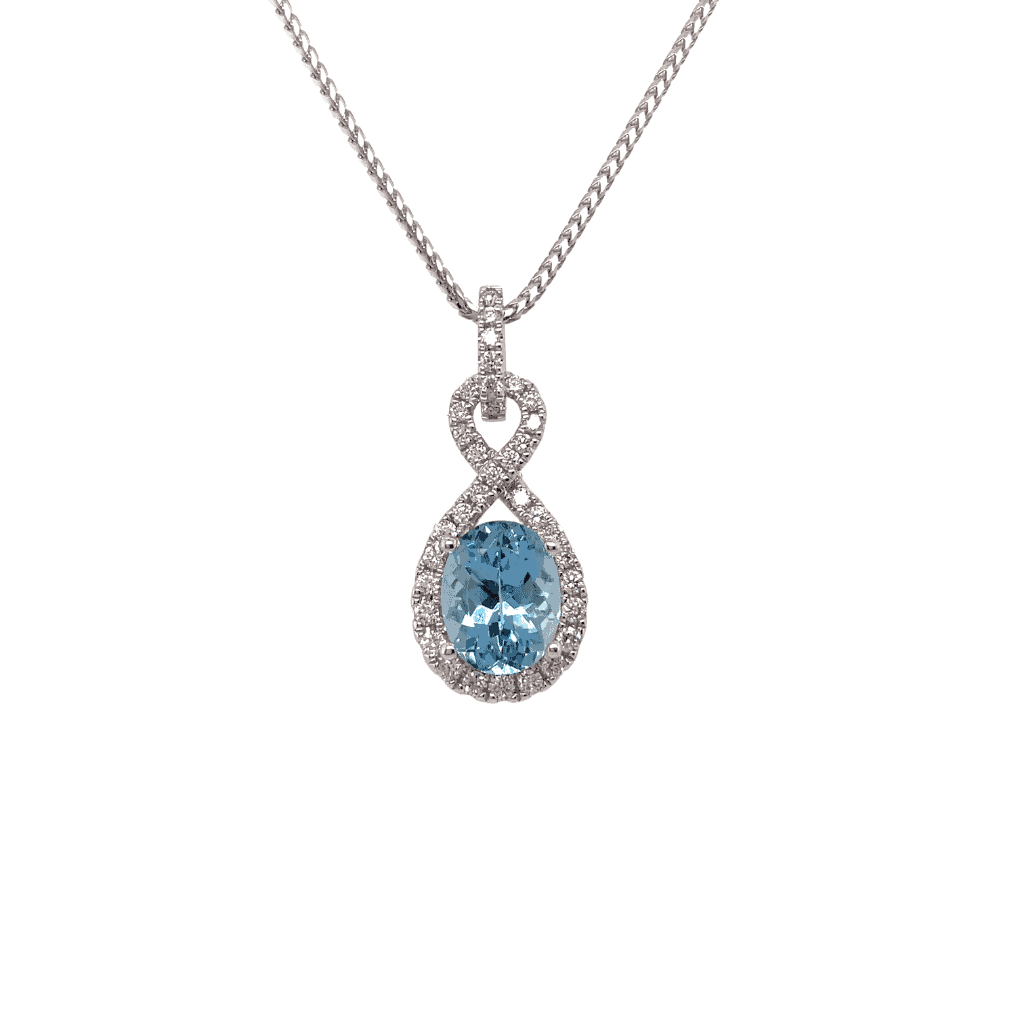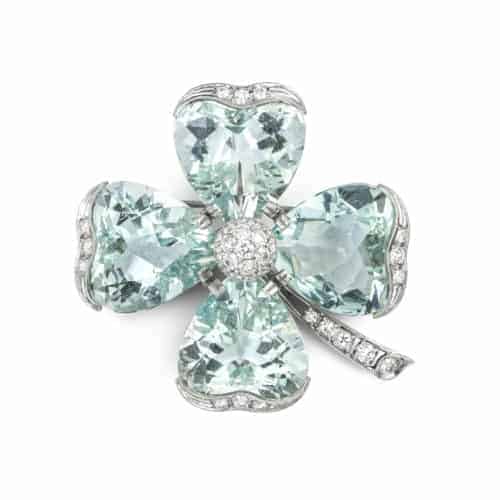March Birthstone – Aquamarine


Introduction to Aquamarine
Aquamarine belongs to the beryl family of gemstones, along with emerald and morganite. The colour range of aquamarine is very narrow – from pastel blue, greenish blue to blue. Its natural colour is sea-green hence its name ‘sea water’, however, as the demand is for sky blue stones, most aquamarine is heated to change the colour. Naturally occurring dark blue colour is possible, but rare, so therefore valuable. Caused by the presence of iron, colour is an important quality factor, so as a general rule the purer and more intense the blue, the more valuable the stone. Some pale aquamarines have lovely soft pale hues and as a ‘jewel matcher’ I always advise personal preference. Supply, demand, and fashion should play no part in dictating individual choices of colour and tone.
A Vintage Aquamarine And Diamond Flower Head Brooch
Image Credit: Bentley & Skinner
Properties of Aquamarine
Colour
Aquamarine is pleochroic, which means that it shows different colours when it’s viewed from different directions. This is caused by the way light passes through its crystal structure – when the stone is cut, it’s done to create the best blue shade possible… as well as to retain the most weight.
Clarity
When it comes to clarity, most faceted aquamarines are free of eye-visible inclusions (imperfections). Gemstone buyers would generally expect ‘clean’ gems with good transparency. Milky aquamarine, or those with inclusions, are less expensive but are beautiful in their own way. In keeping with today’s trend for reflecting nature, designers also use gemstones in their more natural, unique form, with inclusions, or even uncut, as partially polished crystal slices or nuggets.
Cut
Cut is one of the most important factors in a stone’s appearance. Aquamarines can be cut into almost any shape, but cutters often fashion them as emerald cuts or as round or oval brilliants. As aquamarine has a hardness of 7-7.5 on Moh’s scale, its hardness and transparency make it popular with designers, artists and carvers as it can also be faceted in fantasy cuts and sculpted into ornamental objects.
One of my favourite cut shapes has to be the geometric, deco styling. The emerald cut facet arrangement shows off the stunning colour of aquamarine. I am still coveting the wonderful aquamarine ring Megan Markle inherited on her wedding to Prince Harry, from the estate of Diana, Princess of Wales.
First worn at the 1997 sale of her clothes at Christies auctioneers, she paired it with the eternity ring she had worn often as a teenager (which was originally from the Spencer family collection) to replace her wedding band and engagement ring. The ring was commissioned by the Princess from Asprey in 1997 with an aquamarine gifted to her by her close friend Lucia Flecha de Lima. It was apparently from the same mine in Brazil where the Queen’s aquamarine pieces are usually taken from.
An Aquamarine And Diamond Ring
Image Credit: Bentley & Skinner
Sources of Aquamarine
The most important sources of aquamarine are Brazil, Zimbabwe, Afghanistan and the Ural Mountains in Russia. Natural deep blue material also comes from India, Mozambique and Madagascar which looks good even in smaller sizes. Around 5 carats is a bench mark for the intensity of colour display; fashioned aquamarines often have to be fairly large, generally over this weight, to show the intense, dark colour
Many very large aquamarine crystals have been discovered. The largest Brazilian aquamarine on record was found in 1910, in the state of Minas Gerais. It weighed 244 lbs. (110 kg) and measured 19 in. (48 cm) long and 15 in. (38 cm) in diameter! Aquamarine is ‘readily’ available in large sizes – many fine gems of 25 carats or greater, some even up to 100 lbs. (45 kg) have been seen.
Although, as I always say, big isn’t necessarily beautiful, aquamarine is the one gemstone I would make an exception for. An Aquamarine cocktail ring is definitely on my wish list!
How to clean Aquamarine Jewellery
Finally, enjoy your aquamarine. It’s a sturdy gemstone and can therefore be shown off in all styles of jewellery. It just needs to be cleaned regularly (the usual – a lukewarm bowl of water, a drop of washing up liquid and a soft toothbrush to clean around the setting. Rinse in a clean bowl of water and dry with a paper towel).

Aquamarine Pendant








